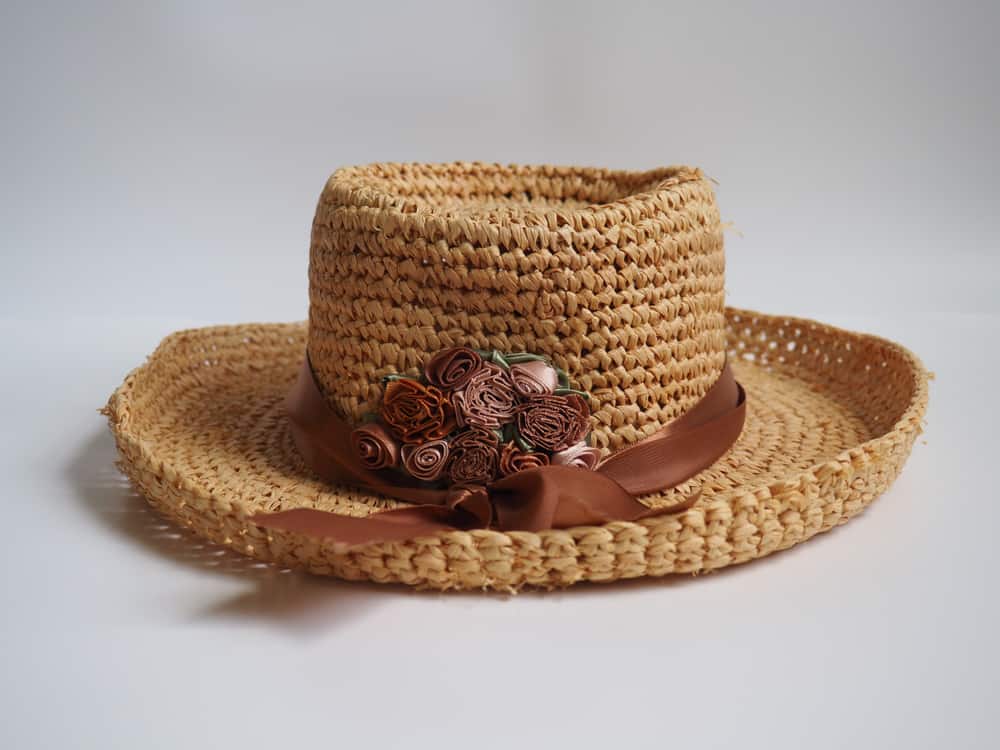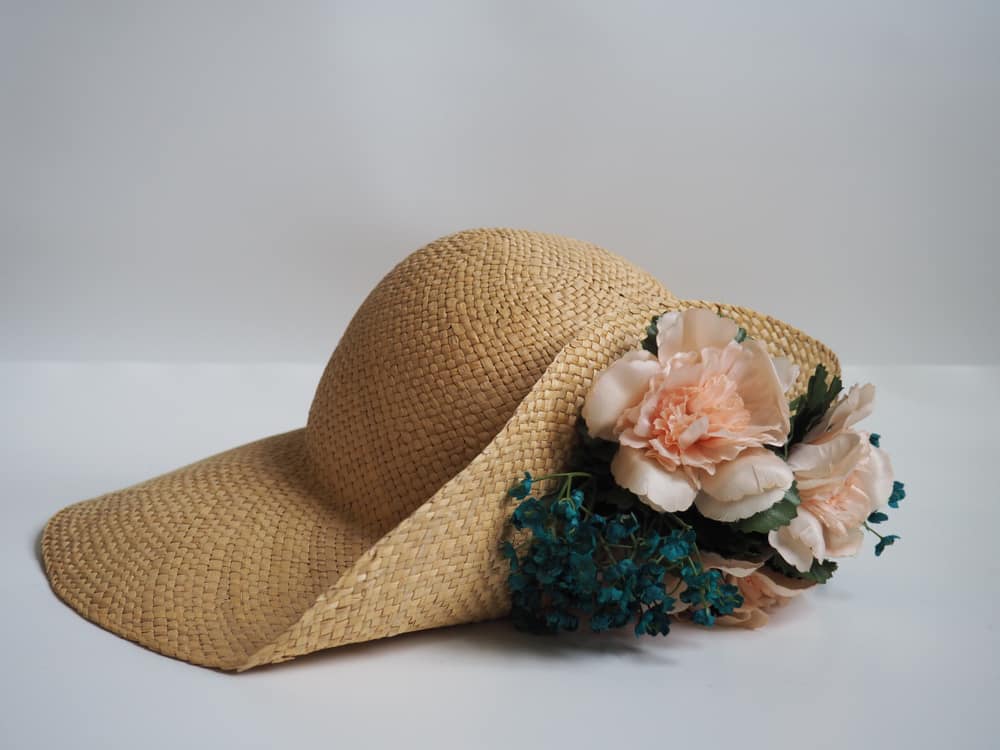In recent times, chupalla hats are still worn by Chilean men. However, they aren’t as popular and numerous as they were back in the days. Men living in the rural areas preferred to wear the chupalla in their daily lives to protect their heads, just like no other modern headdress. Nevertheless, chupalla hats are common among traditional Chilean dancers or cueca fork dancers.

The Chupalla hat is a typical traditional Chilean horseman’s straw hat. The hat is worn in communities across South America.
So, what is a chupalla hat?
The chupalla with a Spanish pronunciation: [tʃuˈpaʎa] is a straw commonly worn by Chilean horsemen.
Today, many people across Central Chile wear chupalla hats as well. The hat is often used by Chilean people when dancing the cueca and during Chilean rodeos. Cueca in full zamacueca is also referred to as marinera, is a Chilean fork dance.
The fork dance is also common in the northern parts of Bolivia, Peru, and Argentina. It is a courtship dance that has been common among the Native Americans in these nations since Spanish colonization. People danced to the rapid, rhythmic music of guitars. Nevertheless, Chilean sailors took the dance to the Mexicans, where it’s now called Chilena.
Table of Contents
- So, what is a chupalla hat?
- Is chupalla in style or fashion today?
- Materials/Fabrics used to make chupalla
- Alternative straws options
- Patterns of chupalla hat
- How to wear the chupalla hat
- Pros and Cons of chupalla hats
- Chupalla hat Historical background
- Price
- Where to buy Chupalla hats
Is chupalla in style or fashion today?
In recent times, chupalla hats are still worn by Chilean men. However, they aren’t as popular and numerous as they were back in the day. Men living in the rural areas preferred to wear the chupalla in their daily lives to protect their heads, just like no other modern headdress. Nevertheless, chupalla hats are common among traditional Chilean dancers or cueca fork dancers.
Materials/Fabrics used to make chupalla

The name chupalla was derived from achupalla. Achupalla is a local name got from a bromeliad plant commonly used in making these hats. Nowadays, chupalla are made from various kinds of straws like rice and wheat.
Alternative straws options
Toquilla straw

Toquilla fiber is a very flexible and long-lasting fiber. It’s used to make hats in Ecuador. Toquilla straw is popular in making Panama hats. The hats are woven in various ways, just like the chupalla hats.
They are woven from the plaited fibrous leaves of toquilla palm trees that have been in existence in Ecuador over the years. Toquilla straws are considered tight, hence making hats made from them to be durable and of good quality.
Toyo straw

The Toyo straw hats are produced by the use of colorful rice-paper yarns from Japan. They are later finished with a plastic glaze. The straws feel smooth, change to a shiny, golden copper or viscose white finished product.
This makes the hats soft to touch and light to wear. Unlike the chupalla hats, which are made by hands, Toyo straw hats are made by machines. This makes it easy to sell them in the medium to low price range.
However, Toyo straws are perfect and attractive to make any form of a hat and yet produce comfortable hats.
Raffia straw

Raffia straws are easily made by peeling Raffia palm leaves which are needle-like long leaves. The leaves can grow up to eighty feet long. Making hats by use of Raffia straws requires one to use single light-brown colored strands.
The leaves’ fibrous nature helps to make extremely quality and durable hats. Their organic material ensures that they are ever flexible. The best Raffia palms grow in the eastern Madagascar coastline.
These palms are believed to produce the best weaving raffia straws to make good hats. It is necessary to note that raffia straw hats are organic and easily recycled. Therefore, they are ideal for protection from direct sunlight.
Shantung straw

Shantung straws are natural fibers from the Manila hemp plant growing on Philippines Island. The straws are used in making shantung straw hats by use of a flat machine woven sheet. The machine blocks them into their required shapes.
The material has a white color making it easy to reflect sunlight. However, shantung straws are basically paper, and this makes them easily ruined by rain and sweat. They are a cheaper alternative to Panama and chupalla hats.
Milan straw

Milan straw refers to the braiding technique, not actually the material. Milan straw hats are made from weaving materials like synthetic plastics and hemp. Some manufacturers still use wheat straws to make traditional golden-hued hats.
The material is durable and light to wear. It gives an elegant appearance and lifestyle to many fashion enthusiasts. Like the Panama hats, they are hats with great quality and value to serve you for about nine months.
Seagrass straw
Seagrass straws comprise various seagrass found along the shallow coastlines. The material makes soft-textured hats with proper ventilation. They prevent the head from direct sunlight but can’t be effective during rain.
Patterns of chupalla hat
Chileans made chupalla hats in a particular shape. They were comparatively wide-brimmed. They hid the Chilean men’s faces from the hot sun. However, the chupalla hats didn’t have wide brims and were as heavy as the sombrero.
The crown of a chupalla is cylindrical and middle height. Looking at the hat from its top, it looks like a flat round plate having an even circle in its middle. The majority of chupallas are designed with a special cord.
This helps to keep the hat on the head despite when it’s worn during windy weather. It is important to note that it’s easy for the hat to be brown away due to its wide brim.
How to wear the chupalla hat

- Just like other hats, wearing a chupalla hat isn’t different or difficult.
- Then, to prevent the wind from blowing off the hat, use the thread to tie around the chin.
Pros and Cons of chupalla hats
Pros of chupalla hats
- The hat protects the face from sun rays. They help to prevent wrinkles that sun radiations would cause.
- Wearing the hat helps to save time. One doesn’t need to spend a lot of time combing the hair.
- It’s stylish headwear. People wear the hat for casual activities. In Chile, most performers of the Chilian fork dance were them. Also, it has become a culture and style for horsemen to wear a chupalla.
- Hats are good for the health of the hair. They help to reduce weakness and color fading caused by sun radiations.
Cons of chupalla hats
- Wearing hats prevent the hair from acquiring the required amount of Vitamin D.
Chupalla hat Historical background

According to the National Archive of Chile, the first Chupalla hat appeared in Chile around the 1740s. In the 1820s, the hat was named “Chupalla.” After they arrived in Chile, the hats were simply for use by the peasants and horsemen. They were commonly referred to as a “cowboy hat” as cowboys liked them for protecting their heads from the sun. Also, they liked the hats since they were light and easy to make.
Later, around the early 19th century, Chileans started decorating the hats. This made them more elaborate and festival Chupalla hats. They included adornments such as cords or ribbons around the crown’s base and tassels. These were simple but stylish ornamental elements that made the hats look more fine and elegant for the men.
The chupalla looks functional and adds a special Chilean charm. Today, the hats are commonly used by fork performers during national celebrations and folk festivals. Some cowboys and men in the rural areas are still wearing the Chupalla hats in their daily lives, making the hats popular among Chileans.
Price
A traditional Chupalla straw hat costs $385.00
Where to buy Chupalla hats
There is a variety of dealers to purchase a Chupalla hat from; Amazon is among the best.



